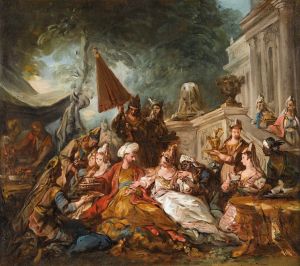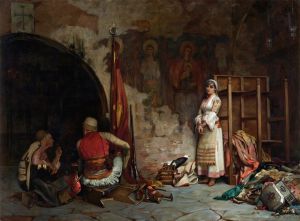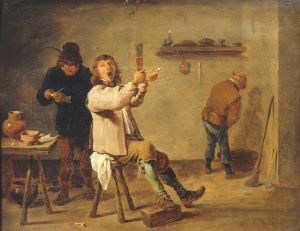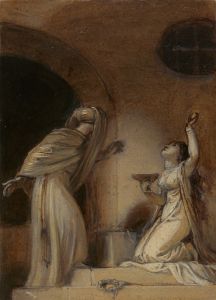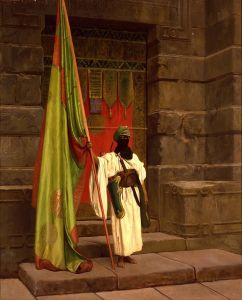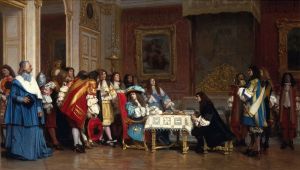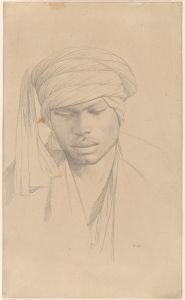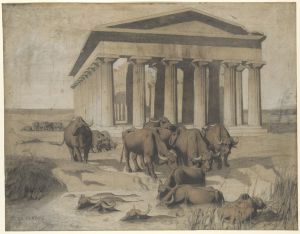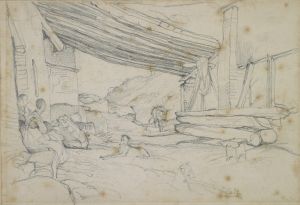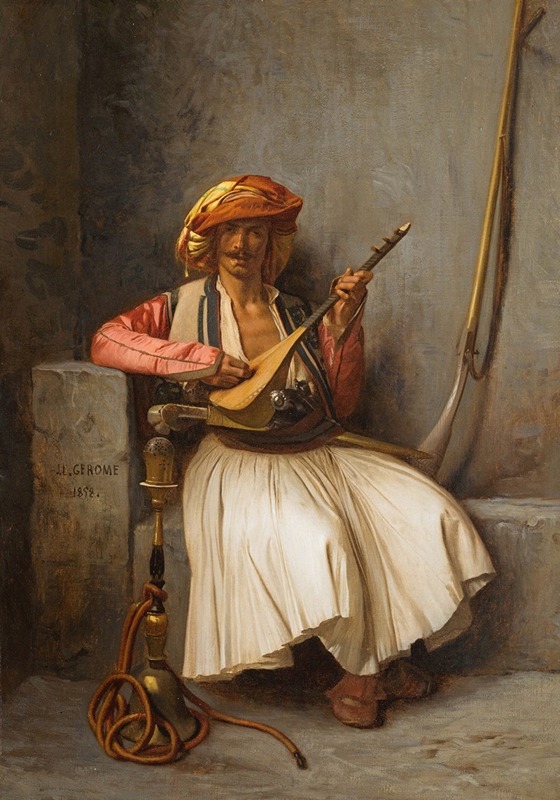
The Lute Player
A hand-painted replica of Jean-Léon Gérôme’s masterpiece The Lute Player, meticulously crafted by professional artists to capture the true essence of the original. Each piece is created with museum-quality canvas and rare mineral pigments, carefully painted by experienced artists with delicate brushstrokes and rich, layered colors to perfectly recreate the texture of the original artwork. Unlike machine-printed reproductions, this hand-painted version brings the painting to life, infused with the artist’s emotions and skill in every stroke. Whether for personal collection or home decoration, it instantly elevates the artistic atmosphere of any space.
Jean-Léon Gérôme's "The Lute Player" is a notable example of the 19th-century French artist's work, reflecting his interest in Orientalism and his skill in academic painting. Gérôme, born in 1824 in Vesoul, France, was a prominent painter and sculptor known for his detailed and historically themed works. He was a leading figure in the academic art movement, which emphasized traditional techniques and classical subjects.
"The Lute Player" is a painting that showcases Gérôme's fascination with the exotic and his meticulous attention to detail. The artwork is part of his broader exploration of Orientalist themes, which were popular in European art during the 19th century. Orientalism in art refers to the depiction of Eastern cultures by Western artists, often romanticized and idealized, reflecting a Western perspective on the East.
In "The Lute Player," Gérôme captures a scene that is both intimate and culturally rich. The painting depicts a musician, likely of Middle Eastern or North African descent, playing a lute, an instrument with deep historical roots in these regions. Gérôme's portrayal of the musician is characterized by his precise rendering of textures and fabrics, a hallmark of his style. The attention to detail in the musician's attire and the surrounding environment reflects Gérôme's commitment to authenticity and his desire to transport viewers to a different world.
The composition of "The Lute Player" is carefully balanced, with the figure of the musician centrally placed, drawing the viewer's eye to the intricate details of the lute and the musician's focused expression. Gérôme's use of light and shadow adds depth to the scene, enhancing the three-dimensionality of the figure and the space he occupies. The color palette is rich and warm, contributing to the painting's overall sense of exoticism and allure.
Gérôme's work, including "The Lute Player," often blurs the line between reality and imagination, inviting viewers to engage with the depicted scene on both an aesthetic and intellectual level. His paintings are known for their narrative quality, often suggesting a story or cultural context beyond the immediate visual representation.
"The Lute Player" is part of Gérôme's extensive body of work that has been exhibited in various museums and galleries worldwide. His paintings continue to be studied and appreciated for their technical excellence and their role in the broader context of 19th-century art. Gérôme's influence extends beyond his lifetime, as his works remain a subject of interest for art historians and enthusiasts exploring the intersections of art, culture, and history.
Overall, "The Lute Player" exemplifies Jean-Léon Gérôme's mastery of academic painting and his enduring fascination with the themes of Orientalism. Through his detailed and evocative portrayal of the musician, Gérôme invites viewers to appreciate the beauty and complexity of a world that, while distant, is rendered with remarkable clarity and sensitivity.





